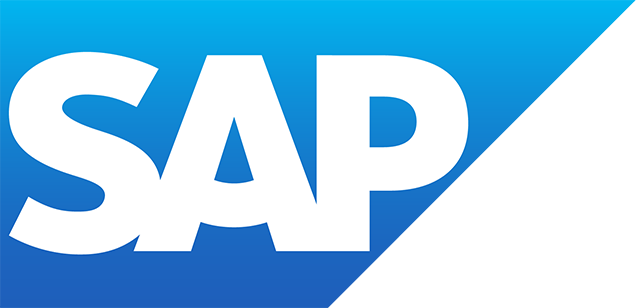SAP Enterprise Asset Management
SAP Asset Analytics | SAP Asset Tracking | SAP EAM | SAP Field Service | SAP GIS | SAP Maintenance Management | SAP Mobile Asset Management
Filter By
Browse By
- SAP Analytics and AI
- SAP Application Development and Integration
- All SAP Application Development and Integration
- SAP ABAP
- SAP ABAP Development Tools
- SAP ABAP Test Cockpit
- SAP API Management
- SAP BAPI
- SAP Basis
- SAP BRF
- SAP Business Application Studio
- SAP CMS
- SAP Design Studio
- SAP Development Tools
- SAP DevOps
- SAP EAI
- SAP EDI
- SAP Extension Suite
- SAP Fiori
- SAP Fiori Elements
- SAP Integration Suite
- SAP Low Code Application Development
- SAP Low Code Automation
- SAP Netweaver
- SAP Release Management
- SAP UI5
- SAP Web Application Server
- SAP Web IDE
- SAP Business Process Management
- SAP Center of Excellence
- SAP CIO
- SAP Customer Experience
- SAP Data and Data Management
- All SAP Data and Data Management
- SAP BW
- SAP BW/4HANA
- SAP Crystal Reporting
- SAP Data Archiving
- SAP Data Center
- SAP Data Governance
- SAP Data Integration
- SAP Data Migration
- SAP Data Quality
- SAP Data Services
- SAP Data Strategy
- SAP Data Visualization
- SAP Data Warehouse Cloud
- SAP DMS
- SAP Document Control
- SAP EIM
- SAP ETL
- SAP ETL Tools
- SAP HANA
- SAP HANA Administration
- SAP HANA Deployment Infrastructure
- SAP HANA Studio
- SAP Master Data
- SAP Master Data Governance
- SAP MDM
- SAP Enterprise Architect
- SAP Enterprise Asset Management
- SAP ERP
- SAP Finance
- All SAP Finance
- SAP Accounting
- SAP AR AP
- SAP Asset Accounting
- SAP Billing Systems
- SAP BPC
- SAP BRIM
- SAP Cash Management
- SAP Central Finance
- SAP Controlling
- SAP COPA
- SAP Cost Center Accounting
- SAP e-invoicing
- SAP FICO
- SAP Finance Automation
- SAP Financial Closing Cockpit
- SAP Financial Consolidation
- SAP Financial Planning
- SAP FX Risk
- SAP General Ledger
- SAP Global Tax Management
- SAP Hyperion
- SAP Order to Cash
- SAP Payment Processing
- SAP Profitability Analysis
- SAP Rebate Management
- SAP S/4HANA Finance
- SAP Universal Journal
- SAP Governance Risk and Compliance
- SAP Human Capital Management
- SAP Intelligent Technologies
- SAP Platform and Technology
- All SAP Platform and Technology
- SAP Business Technology Platform
- SAP Cloud Connector
- SAP Cloud Integration Platform
- SAP Cloud Migration
- SAP Cloud Platform
- SAP Cloud Providers
- SAP Cloud Strategy
- SAP Container Platform
- SAP Digital Asset Management
- SAP Digital Integration Hub
- SAP Digital Signature
- SAP HANA Enterprise Cloud
- SAP HEC
- SAP Hyperscalers
- SAP Infrastructure
- SAP Messaging
- SAP Smart Forms
- SAP Quality and Testing
- SAP Security
- SAP Spend Management
- SAP Supply Chain Management
- All SAP Supply Chain Management
- SAP APO
- SAP Asset Management
- SAP Business Network
- SAP Digital Manufacturing Cloud
- SAP Digital Twin
- SAP EWM
- SAP IBP
- SAP Inventory Management
- SAP Label Printing
- SAP Logistics
- SAP Manufacturing
- SAP Manufacturing Automation
- SAP MES
- SAP MII
- SAP MM
- SAP MRO
- SAP MRP
- SAP Order Management
- SAP Plant Maintenance
- SAP PLM
- SAP Production Planning
- SAP S&OP
- SAP SD
- SAP SPM
- SAP Supply Chain Planning
- SAP Track and Trace
- SAP Transportation Management
- SAP System Administration
What is Enterprise Asset Management?
Enterprise Asset Management (EAM) in SAP focuses on managing and maintaining an organization’s assets throughout its lifecycle. It employs systematic approaches such as asset tracking, planning, maintenance, and analysis to ensure optimal asset utilization and performance.
What is Enterprise Asset Management?
Enterprise Asset Management (EAM) in SAP focuses on managing and maintaining an organization’s assets throughout its lifecycle. It employs systematic approaches such as asset tracking, planning, maintenance, and analysis to ensure optimal asset utilization and performance.
By leveraging advanced technologies such as IoT (Internet of Things) sensors, predictive analytics, and cloud-based platforms, Enterprise Asset Management (EAM) in SAP enables organizations to monitor asset health, schedule preventive maintenance, manage repairs, and make informed decisions on asset acquisition or disposal. This proactive and data-driven approach to asset management helps organizations minimize downtime, reduce costs, extend asset lifespan, and improve overall operational productivity.
SAP Enterprise Asset Management (EAM) empowers organizations to align their asset management best practices with their broader organizational goals and achieve sustainable competitive advantage.
How Does an EAM System Work?
As the landscape of Enterprise Asset Management (EAM) in SAP continues to evolve, traditional on-premise systems have given way to modern cloud-based solutions. This technological advancement brings advantages like increased data storage capacities, enhanced security measures, and seamless integration with complementary applications such as supply chain management systems, mobile workforce management systems, Internet of Things (IoT) sensor systems, GIS (geographic information systems), GPS, and various other applications. By leveraging cloud platforms, organizations can efficiently manage their assets and also benefit from scalability, flexibility, and accessibility to real-time information while optimizing their asset management processes and driving operational excellence. EAM involves the following steps:
- Collecting and storing asset data in the cloud, utilizing the cloud’s agility to centralize asset information and generate analytical insights.
- Using data to guide asset strategy and optimize productivity by leveraging ML and predictive analytics to assess risks.
- Proactively schedule and maintain inspections, prioritize critical assets to minimize downtime, and resolving issues.
- Extending EAM system capabilities to workers enables management of work orders, asset processes, remote tracking, and maintenance process management.
Why is Asset Management Important?
Asset management is crucial for organizations across industries as it enables them to optimize the use of physical assets while minimizing downtime and maximizing returns. It also helps mitigate risks by proactively addressing potential failures and ensuring asset reliability. Informed decision-making is facilitated by analyzing asset data, allowing organizations to strategically plan investments, optimize portfolios and support regulatory compliance and ensure adherence to standards and regulations. Overall, effective asset management enhances operational efficiency, reduces risks, supports decision-making, and leads to improved profitability and long-term success.
SAP Intelligent Asset Management
SAP offers SAP Intelligent Asset Management, a suite of solutions that “enables an organization to use sensor technologies and predictive analytics to improve asset health.” The four solutions and some of their capabilities include:
- SAP Asset Intelligence Network SAP: Asset Intelligence Network offers collaborative capabilities and automated equipment tracking and enables organizations to seamlessly connect with stakeholders across the asset lifecycle. By leveraging this network, businesses can effectively manage and maintain their assets while benefiting from real-time insights. The platform automates equipment tracking and streamlines asset management processes, enhances operational efficiency, and enables proactive decision-making regarding maintenance, repairs, and replacement. SAP Asset Intelligence Network empowers organizations to optimize their EAM strategies, improve asset performance, and drive operational excellence in a collaborative and automated environment.
- SAP Predictive Asset Insights: SAP Predictive Asset Insights provides a 360-degree view of organizational assets and leverages advanced predictive analytics to generate a comprehensive view of assets, including their condition, performance, and maintenance requirements. The 360-degree view allows for real-time asset monitoring and tracking, enabling proactive maintenance and optimized asset utilization. With advanced predictive analytics algorithms, the solution enables forecasting asset failures and finding potential issues before they occur. By harnessing the power of data and analytics, SAP Predictive Asset Insights empowers organizations to make data-driven decisions, reduce downtime, improve operational efficiency, and enhance the overall performance and reliability of their asset portfolio.
- SAP Mobile Asset Management: SAP Mobile Asset Management streamlines work order management and enhances asset maintenance processes. The solution enables efficient work order creation, assignment, and tracking, empowering field workers and other users to access and update critical asset information in real time through mobile devices. SAP Mobile Asset Management allows organizations to optimize resource allocation, improve response times, and ensure the timely completion of maintenance tasks. The cloud-based deployment provides seamless integration, enabling organizations to harness the benefits of advanced analytics, IoT sensors, and other complementary applications to enhance asset management practices.
- SAP Asset Strategy and Performance Management: SAP Asset Strategy and Performance Management optimizes asset performance and enhances maintenance strategies by leveraging asset information management and failure modes and effects analysis (FMEA). Asset information management allows to capture, store, and manage critical asset information, including technical specifications, maintenance history, and documentation. This centralized repository enables easy access to asset data, facilitating informed decision-making and streamlined maintenance processes. The failure modes and effects analysis (FMEA) module enable organizations to identify potential failure modes of assets, assess their potential impact, and develop appropriate preventive and corrective maintenance strategies. SAP Asset Strategy and Performance Management empowers organizations to maximize the value of their assets, reduce downtime, and enhance operational efficiency through effective asset information management and failure modes analysis.
Join SAPinsider to access opportunities for networking and engagement in the dynamic SAP ecosystem. As a member, you will have access to a wealth of valuable resources and content tailored to SAP technologies and best practices like the latest research reports, articles, webinars, and events that will keep you informed and ahead of the curve.
SAPinsider membership grants you exclusive access to in-depth analyses, expert insights, and practical guidance that will empower you to navigate the ever-evolving SAP landscape with ease. SAPinsider membership will enable you to remain one step ahead and harness the latest trends, innovations, and strategies to drive your own powerful digital transformations, optimize your SAP investments, and unlock business success.
816 results
-

 Premium
Premium
How to Configure and Retrofit Depreciation Areas When You Add a New Depreciation Area in a Live Site
Reading time: 13 mins
Learn how to add or retrofit depreciation areas with a specific depreciation key. See how you can use a substitution rule and worklists when a new company code with a specific legal requirement on depreciation calculation and reporting is rolled out in the same country with an already existing company code. You need to have…...…
-

 Premium
Premium
Asset Accounting: Highlight Key Data Conversion Issues During Implementation
Reading time: 9 mins
Prepare for an Asset Accounting implementation project with these best practices and tips for converting legacy data. Key Concept Transaction AS91 is a manual online transfer method of loading legacy data. It enables you to load the asset’s master data and historical financial data. It allows you to see how the loaded data appears in…...…
-

 Premium
Premium
Learn How to Maintain Parallel Asset Values and Post to the SAP General Ledger
Reading time: 12 mins
Learn how to manage parallel values in SAP Asset Accounting using depreciation areas. Follow a discussion of parallel posting to the general ledger with the use of additional general ledger accounts. Key Concept SAP Asset Accounting (FI-AA) provides functionality to manage parallel asset values. In FI-AA, asset values are managed in parallel using a structure…...…
-
-

 Premium
Premium
Capitalize Assets with Budget Monitoring Using Statistical Internal Orders
Reading time: 9 mins
See a method of direct capitalization with budgetary control that eliminates the need to post to the internal order and settle it. This method is best suited for simple budget monitoring of certain groups of assets — for example, lump sum budgets for furniture and fittings. Key Concept In an SAP system, assets are capitalized…...…
-

 Premium
Premium
Discover the Time-Dependent Depreciation Parameters of the New Depreciation Calculation in mySAP ERP 2005
Reading time: 36 mins
As of mySAP ERP 2005, SAP has delivered a new depreciation calculation in Asset Accounting. This algorithm introduces new depreciation concepts as well as new functionality — period interval-based parameters and time-dependent depreciation parameters. Key Concept The new depreciation calculation available with mySAP ERP 2005 is 100% compatible with the older one. No configuration changes…...…
-

 Premium
Premium
Take the Guesswork Out of Making Asset Changes
Reading time: 8 mins
When troubleshooting issues with fixed assets, you can use the simulation tool to simulate depreciation term changes and asset transactions to ensure your depreciation adjustments are correct. Key Concept When troubleshooting or diagnosing issues in SAP ERP, it is common to make changes to data or post new transactions to rectify a given problem, such…...…
-

 Premium
Premium
Dealing with Ukraine Regulations? Understand How to Account for Fixed Asset Repairs
Reading time: 7 mins
Leverage the country-specific functionality of your SAP system for efficient accounting and compliance with local Ukrainian laws and regulations. Key Concept Fixed asset repair costs are usually charged off when they are incurred. However, Ukraine law has a distinctive requirement to capitalize such costs if they exceed a certain limit. An SAP system provides a…...…
-
-

 Premium
Premium
Dodd-Frank Act: Standardize Risk Management Processes with SAP BusinessObjects Risk Management 10.0
Reading time: 17 mins
Ensure that your enterprise’s risk management procedures comply with the Dodd-Frank Act’s requirements pertaining to the management of systemic risks by using SAP BusinessObjects Risk Management 10.0. It supports the five phases of risk management. Key Concept The Dodd-Frank Act was signed into law in July 2010 in response to the 2007 US financial crisis…....…
-

 Premium
Premium
How to Integrate FI-AA with the New G/L for Segment Reporting
Reading time: 8 mins
With the new general ledger (G/L), you no longer need custom programs or user exits to obtain the asset balances for segment reporting. Instead, you can update profit center/segments details for all asset transactions and depreciation postings in the new G/L. Find out what settings you need to make in Asset Accounting (FI-AA) to make…...…
-

 Premium
Premium
11 Steps to a Successful Year-End Close for Fixed Assets
Reading time: 9 mins
Year-end closes often present problems both big and small. You can minimize these problems for both the current and subsequent year-end closes by following these simple steps. Key Concept The Fixed Asset module (Asset Accounting) is used to manage and supervise fixed assets within SAP R/3. It is a subsidiary ledger to the G/L, providing…...…
Featured Insiders
-

Gaurav Pandey
Principal SAP Architect, Amgen
-

Andy Hancock
Global Vice President Center of Excellence, SAP Digital Supply Chain
-

John Froelich
Bramasol
Become a Member
Unlimited access to thousands of resources for SAP-specific expertise that can only be found here.
Upcoming Events
Related Vendors
Your request has been successfully sent


